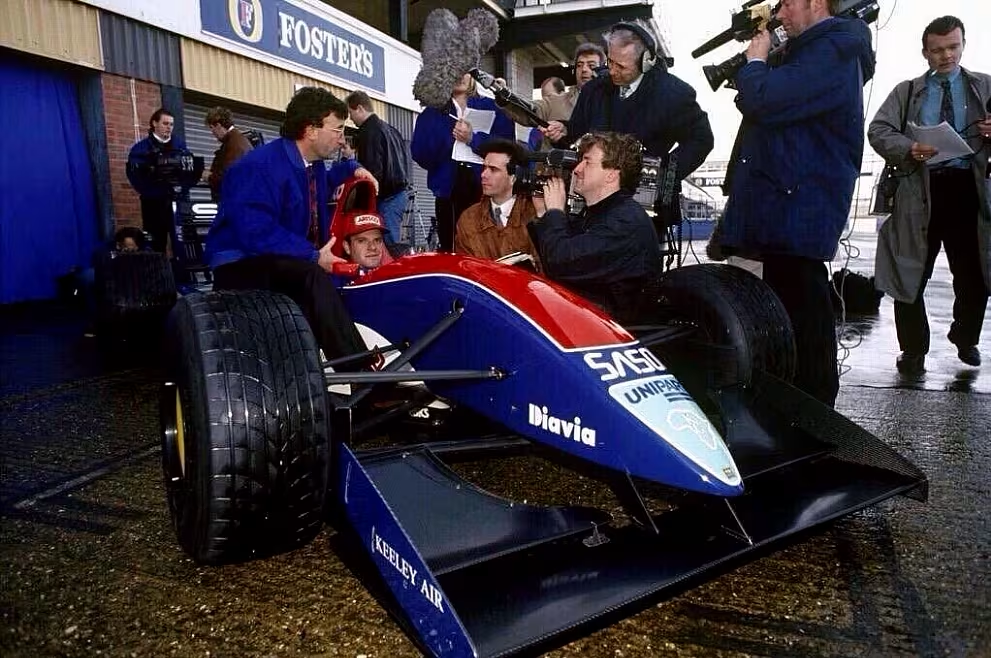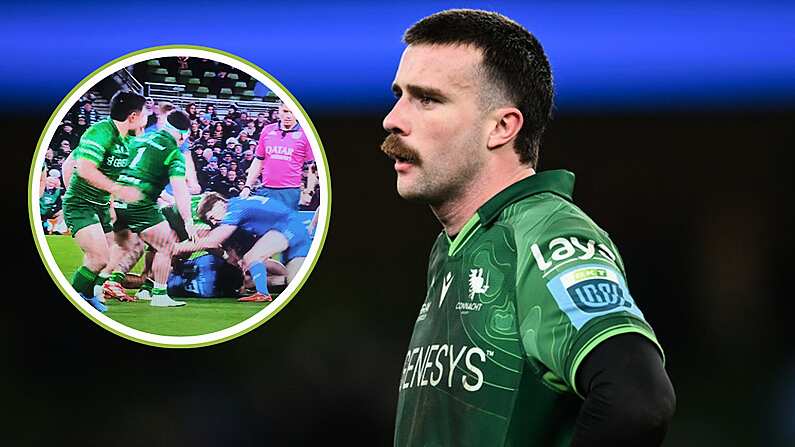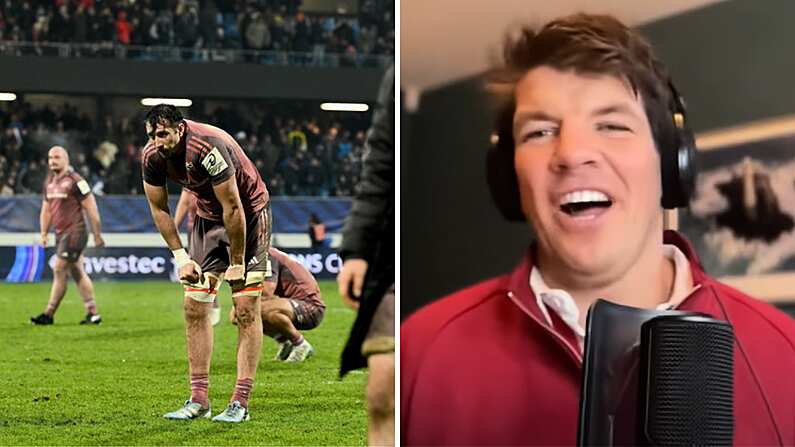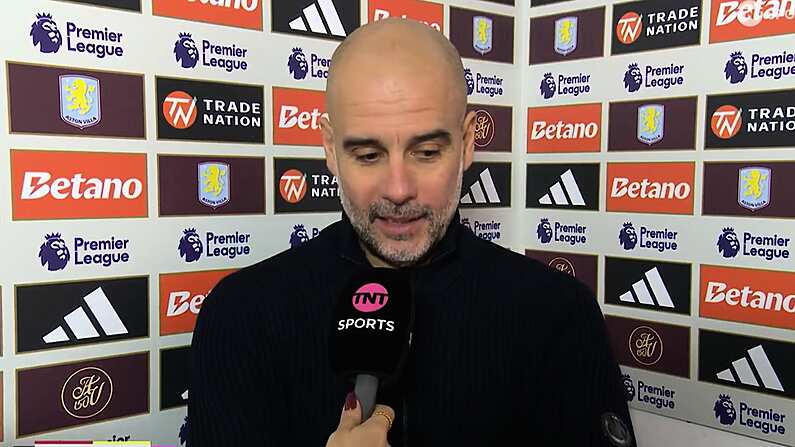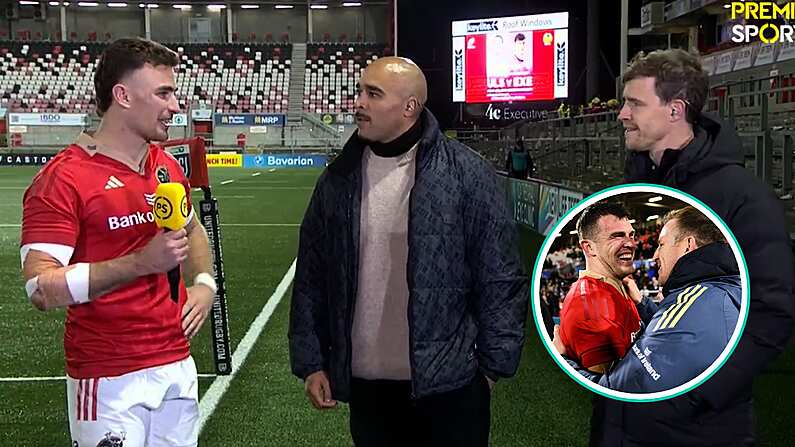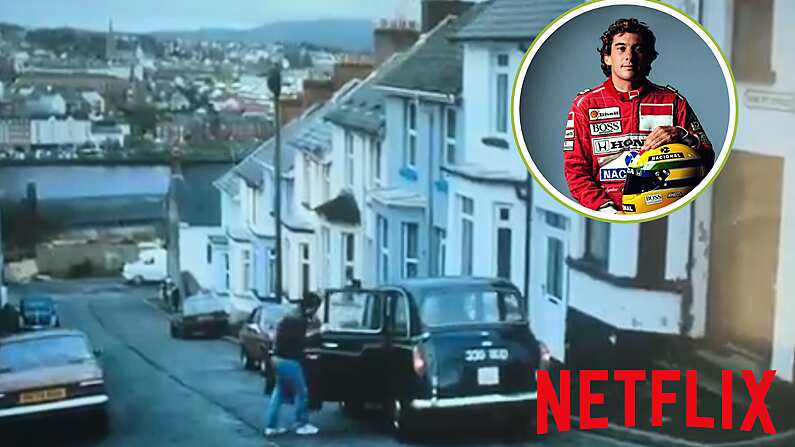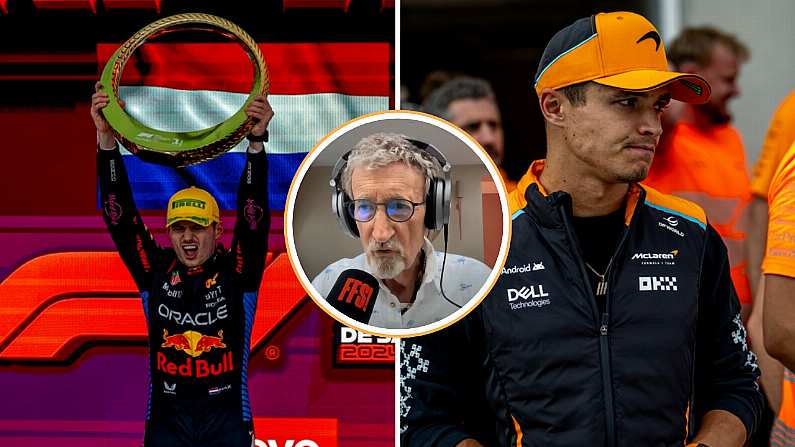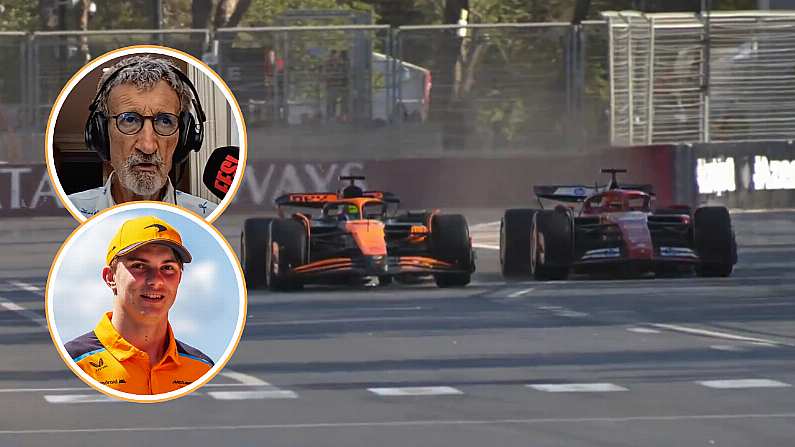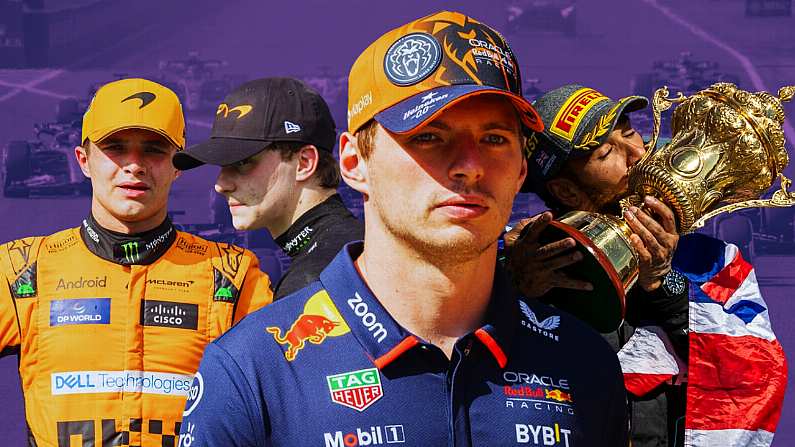Thursday April 6 marks 20 years since Jordan F1 team's last ever race win, so we've taken a trip down memory lane...
A rain-delayed start, five safety cars, a river on track, home heartbreak, a car on fire in the pitlane, and a race result that changed five days later. The 2003 Brazilian Grand Prix is fondly remembered by F1 fans as one of the craziest races in the sport's history - and it has a fond place in the hearts of Irish fans as well, as the last race ever won by the Jordan team.
Set up by Dubliner Eddie Jordan 30 years ago in 1991, the Jordan team were (to date) the only ever Irish team to compete in the sport. In their debut years in the championship, they became known as a team willing to give young drivers a chance, with Michael Schumacher among those given his first drive in F1 by the team.
Around the turn of the century, Jordan began to see terrific success. World champion Damon Hill won the team's first ever race at the 1998 Belgian Grand Prix, before Heinz-Harald Frentzen won two races during the 1999 season, when the team finished third in the championship, and Frentzen threatened the eventual winner of the drivers’ championship Mika Hakkinen.
It was an incredible time for Irish sports fans and petrol heads, to see a team eminating from Dublin competing with the likes of Ferrari, McLaren and Benetton.
By the 2003 season, however, Jordan had fallen down the pecking order significantly. This was the peak of Michael Schumacher and Ferrari's dominance, and new talents like Kimi Raikkonen and Fernando Alonso were emerging at McLaren and Renault. By the time the F1 circus arrived in Brazil for the 3rd race of the season, Jordan still had no points to their name for the season.
By the 2003 season, however, Jordan had fallen down the pecking order significantly. This was the peak of Michael Schumacher and Ferrari's dominance, and new talents like Kimi Raikkonen and Fernando Alonso were emerging at ever-strengthening McLaren and Renault teams. By the time the F1 circus arrived in Brazil for the 3rd race of 2003, Jordan still had no points to their name for the season.
Jordan and the rest of the paddock were in for a huge test at the Brazilian Grand Prix. The inevitable Sao Paulo deluge of rain arrived, forcing the race to be delayed and to eventually start 15 minutes late, behind the safety car.
Home favourite Rubens Barrichello started on pole position in the Ferrari, ahead of David Coulthard and Mark Webber. Giancarlo Fisichella of Italy and Ralph Firman of Ireland were the Jordan drivers for the race and started in 8th and 16th respectively. There were other familiar names in the field, such as 1997 world champion Jacques Villeneuve, and Jos Verstappen - father of current star Max.
The rain had let up in the opening stages, but a faulty drain cover at turn three spilled the excess water across the track, and became a major hazard.

Six drivers in total spun at turn three, including defending world champion Michael Schumacher, who spun off while the marshals were recovering the cars of Juan Pablo Montoya and Antonio Pizzonia. Future world champion Jenson Button also saw his race end at turn three, while Mark Webber was the only man to spin at the corner and get the car going again.
Only a few laps before that incident, Irishman Firman had spun entering the first corner, narrowly avoiding his teammate but crashing into Olivier Panis - ending both his and Panis' race and bringing out the safety car.
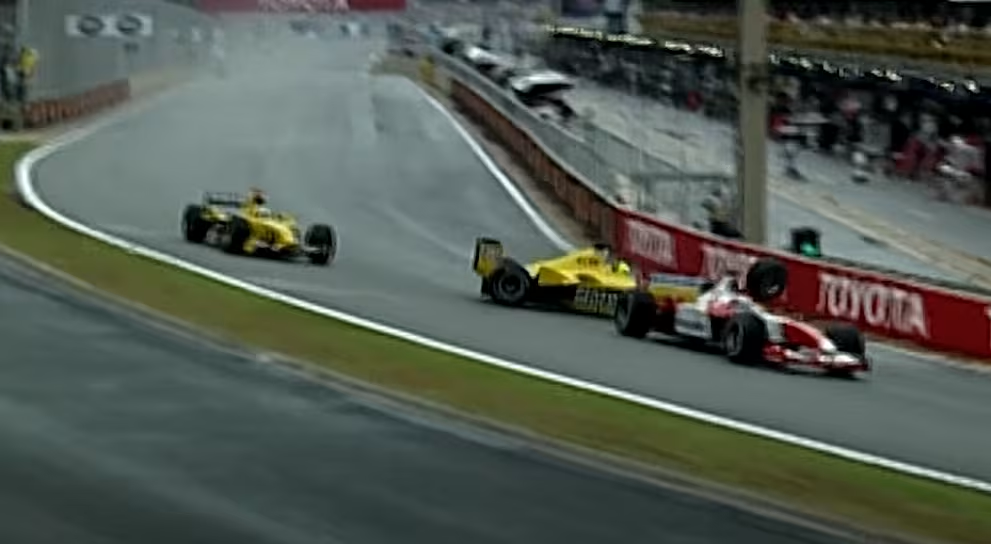
There were far too many incidents to do justice to in this piece, so a brief overview follows. Barrichello lost the lead to Coulthard on the restart, who then lost the lead to Raikkonen, who then pitted and handed the lead back to Coulthard, who then ran wide and handed the lead back to Barrichello. While all of this was going on, Webber joined the club to have been caught out at turn 3, while Alonso had to serve a penalty and dropped from fourth to ninth. There had also been four safety cars deployed by lap 40.
Utter. Chaos.
There was heartbreak for the home crowd on lap 47, when Barrichello's car failed and he was forced to retire from the lead. He had never won his home race - and he never would before retiring in 2011. Astonishingly, 2003 was the ninth year in a row that Barichello had failed to finish his home race.
David Coulthard inherited the lead, but gave it up when he pitted five laps later. This is where the lap numbers get important and - somehow - where the race gets even more chaotic. Coulthard stopped on lap 52, meaning Raikkonen moved into the lead that lap.
Fisichella in the second Jordan had made his pitstop before the safety car had returned to the pitlane at the initial race start and had yet to stop again, running a mega 50+ lap stint on his wet tyres and full tank of fuel. This meant he was running close behind Raikkonen in 2nd place, with Fernando Alonso in 3rd for Renault.
On lap 54, Raikkonen ran wide and allowed the Jordan of Fisichella to take the lead. Both cars were very marginal on fuel and it was likely that they would both have to pit again. However, later that lap the Jaguar of Mark Webber piled into the barriers at the final corner and the barrier came apart. Tires were strewn across the track and the safety car was deployed - but Fernando Alonso missed the yellow flags and fired into one of the tires and then the trackside barrier at high-speed, causing yet more damage.

The track was completely covered in debris, with Alonso in need of medical treatment. He ultimately only suffered bruising, but had to be brought by ambulance to the local hospital. The F1 rules allowed a race result to be called once 75% of the race distance had been completed - so that's what they did, ending the race after 56 laps.
This is where we pay attention to the lap numbers. If an F1 race is ended early, the race results are counted back two laps before the red flag - so the results should have been taken from the end of lap 54, as the red flag flew on lap 56. But lap 56 had only just started when the red flag had flown - indeed, when one sees the footage of Alonso’s car smashing into the tyre, Fisichella’s car can be seen in the distance approaching the start/finish line to start lap 56.
Fisichella did start lap 56, and seconds later the red flag fell. However, it had been so marginal that race control made the crucial mistake of determining the race had ended on lap 55. This had the effect of making Raikkonen the winner, as the race result now went back to the end of lap 53, rather than 54.
As the podium ceremony went on, Eddie Jordan was clearly aggrieved - perhaps not only because of the unfair result, but also because Fisichella's car caught fire on the way back to the pits. It was a suitably crazy end to a crazy race.
It wasn't over yet, though. The stewards took a closer look at the data and found that Fisichella had indeed started lap 56 when the red flag flew, meaning that the results should have been counted from the end of lap 54 - by which time he had overtaken Raikkonen. They announced five days after the race that the results had been updated and that Fisichella was the rightful race winner. At the following race weekend in Imola, Raikkonen handed the trophy over to Fisichella in an official ceremony. And...breathe.

The altered race results meant that none of the drivers who finished in the top three actually stood on the correct step of the podium. Raikkonen stood atop the podium and heard the Finnish national anthem play, when in fact he should have swapped places with Fisichella. Meanwhile, 3rd-placed man Fernando Alonso was in an ambulance somewhere in the depths of Sao Paulo en route to Sao Paulo when the podium ceremony took place.
It is perhaps the biggest shame of the day that the Jordan team did not get to celebrate in the way they should have been allowed to. The team initially celebrated a race win, before being gut-punched by the announcement of Raikkonen’s (incorrect) victory. The post-race footage captures Eddie Jordan frantically ringing the FIA’s Stewards room to ask if Fisichella is “1 or 2?” and whether he needs to join him on the podium as the winning team’s rep.
The Irish team did not even get to hear ‘Amhrán na bhFiann’ on the podium after what would ultimately become their final race as the winning constructor.
#onthisday 18 years ago was run the 2003 #BrazilGP, one of the craziest race in the #f1 history. My first win. pic.twitter.com/zDuoMNfxnS
— Giancarlo Fisichella (@OfficialFisico) April 6, 2021
It was, to an extent, a lucky race win. The Jordan EJ13 is undoubtedly one of the poorest cars ever to win a Grand Prix, and both McLaren men could count themselves unlucky not to have taken the chequered flag, as could Barichello.
But Jordan made their own luck as well. Their gamble to pit as the first safety car ended and load the car up with enough fuel to run deep into the race was what put them in the position to move into P1 when it mattered. Fisichella’s only stop of the GP was that early fuel stop, and it proved a masterstroke. And it was a gamble - Fisichella was in P8, a points scoring position, when he pitted, meaning Jordan really were risking a lot by bringing him in. It proved to be one of the best in the sport’s modern history.
The 2003 Brazilian Grand Prix is without question one of the craziest F1 races ever held, if not among the craziest sporting events ever held. The nature of the victory makes it even more iconic than Jordan's final win would already have been and it's a nice touch that the team's last win came in such a classic race. It was also Fisichella's first ever F1 race win.
Two years later, Eddie Jordan sold the Jordan team and they have gone through several name changes since. This season they race as Aston Martin and, remarkably, the man whose crash inadvertently won Jordan the 2003 Brazilian GP, Fernando Alonso, is now the main man at the team.
A resurgent Alonso and Aston Martin may well take a race win this season, but they’ll have to be in an awfully special race to top the drama of Jordan’s last win in Brazil in 2003.
SEE ALSO: Sex Pistols And Schumacher: Peter Collins On A Crazy Decade Covering F1



